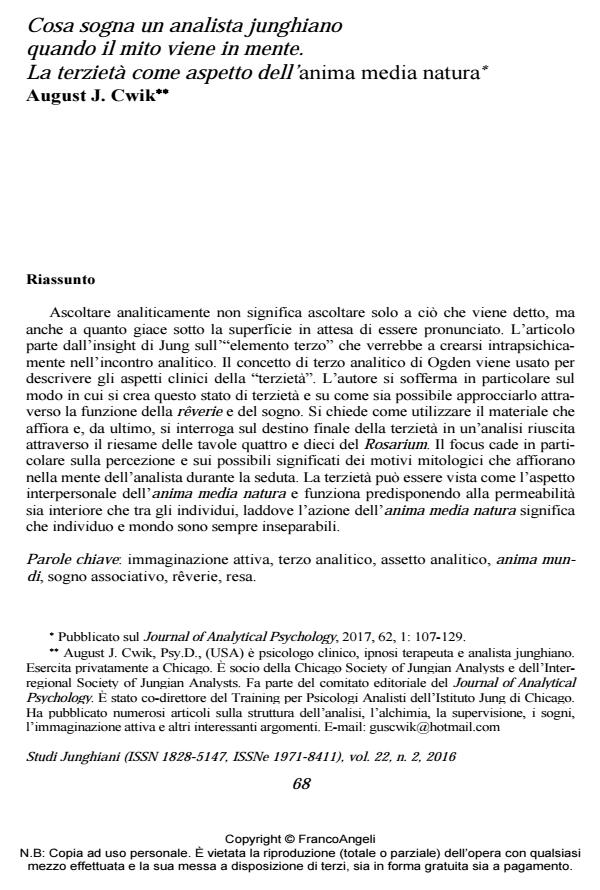Cosa sogna un analista junghiano quando il mito viene in mente. La terzietà come aspetto dell’anima media natura
Titolo Rivista STUDI JUNGHIANI
Autori/Curatori August J. Cwik
Anno di pubblicazione 2017 Fascicolo 2016/44
Lingua Italiano Numero pagine 22 P. 68-89 Dimensione file 411 KB
DOI 10.3280/JUN2016-044006
Il DOI è il codice a barre della proprietà intellettuale: per saperne di più
clicca qui
Qui sotto puoi vedere in anteprima la prima pagina di questo articolo.
Se questo articolo ti interessa, lo puoi acquistare (e scaricare in formato pdf) seguendo le facili indicazioni per acquistare il download credit. Acquista Download Credits per scaricare questo Articolo in formato PDF

FrancoAngeli è membro della Publishers International Linking Association, Inc (PILA)associazione indipendente e non profit per facilitare (attraverso i servizi tecnologici implementati da CrossRef.org) l’accesso degli studiosi ai contenuti digitali nelle pubblicazioni professionali e scientifiche
Ascoltare analiticamente non significa ascoltare solo a ciò che viene detto, ma anche a quanto giace sotto la superficie in attesa di essere pronunciato. L’ar¬ti¬colo parte dall’insight di Jung sull’"elemento terzo" che verrebbe a crearsi intrapsichicamente nell’incontro analitico. Il concetto di terzo analitico di Ogden viene usato per descrivere gli aspetti clinici della "terzietà". L’autore si sofferma in particolare sul modo in cui si crea questo stato di terzietà e su come sia possibile approcciarlo attraverso la funzione della rêverie e del sogno. Si chiede come utilizzare il materiale che affiora e, da ultimo, si interroga sul destino finale della terzietà in un’analisi riuscita attraverso il riesame delle tavole quattro e dieci del Rosarium. Il focus cade in particolare sulla percezione e sui possibili significati dei motivi mitologici che affiorano nella mente dell’analista durante la seduta. La terzietà può essere vista come l’aspetto interpersonale dell’anima media natura e funziona predisponendo alla permeabilità sia interiore che tra gli individui, laddove l’azione dell’anima media natura significa che individuo e mondo sono sempre inseparabili.
Parole chiave:Immaginazione attiva, terzo analitico, assetto analitico, anima mundi, sogno associativo, rêverie, resa.
August J. Cwik, Cosa sogna un analista junghiano quando il mito viene in mente. La terzietà come aspetto dell’anima media natura in "STUDI JUNGHIANI" 44/2016, pp 68-89, DOI: 10.3280/JUN2016-044006